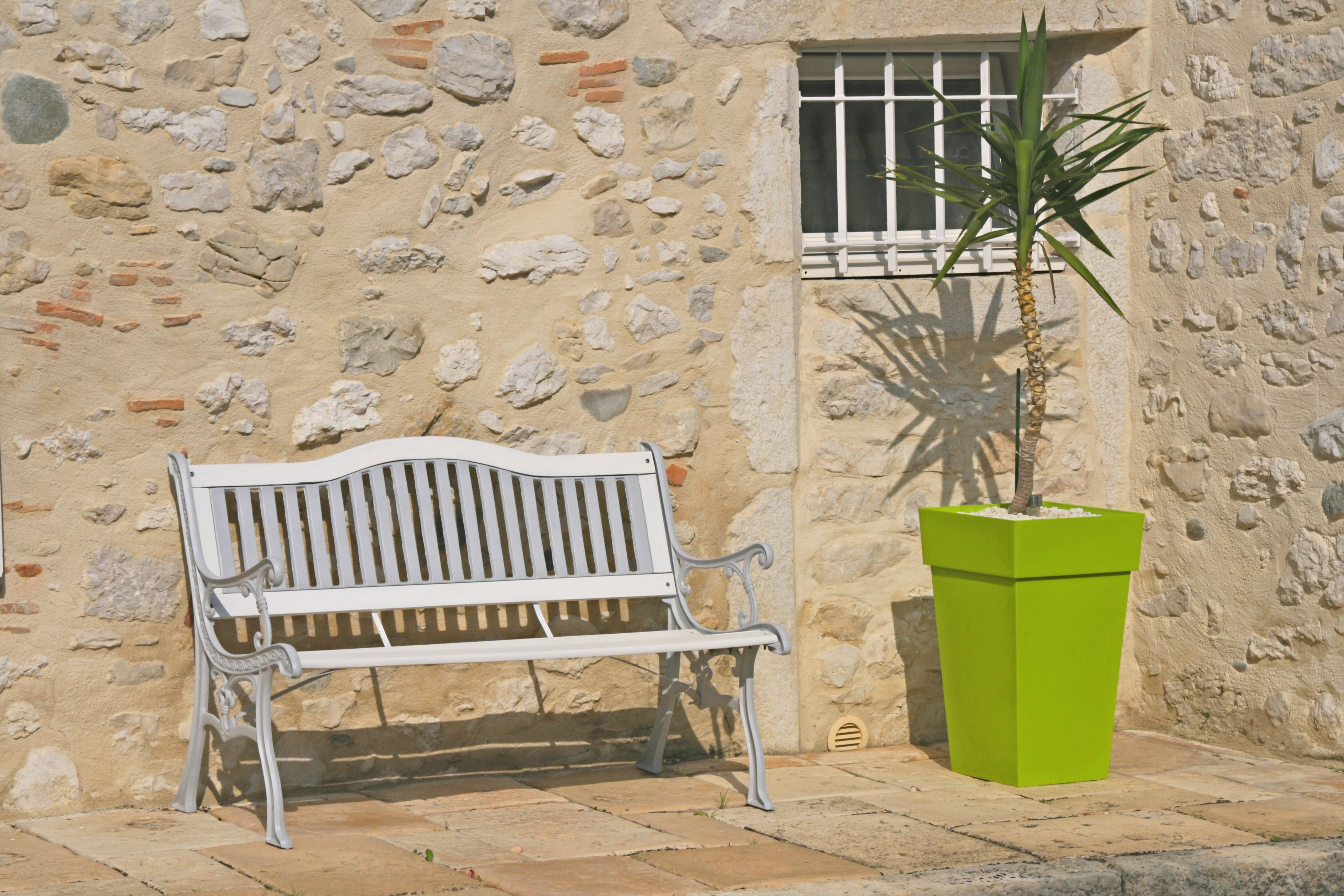10 Best Drought Tolerant Plants
Posted by Jason Wyrwicz on Aug 20th 2021

10 Drought-Tolerant Plants for Decks and Patios
Did you know research conducted by the United States Environmental Protection Agency shows that the average American family uses 320 gallons of water per day, with 30% used outdoors to sustain plants and grass? Considering a standard bathtub holds 42 gallons of water, our gardens are getting more of a wash than us!
But with climate change heating our planet to dangerous new extremes, our summer months are becoming even dryer and water even more precious. Gardening, using drought-tolerant plants in pots and planters instead of landscaping with thirsty lawns is an excellent way to do your bit for the environment. At the same time, you’ll still cultivate a lush and verdant space.
So ditch the watering can, switch off the sprinklers, and forget about the hose — here are 10 of the best flowers and shrubs that don't just survive in dry soils; they thrive.
1. Coneflower
Members of the daisy family, coneflowers are adored for their cheerful colors — you can find them in every hue from hot pink and canary yellow to soft coral and cream. These botanical beauties are native to North American prairies, which means they flourish in dry soil and require very little upkeep.
However, as coneflowers are annuals, blooming from late June until the first frost, you'll need to harvest some of their seeds for planting next year. Do leave a few spent blooms, though, as wildlife love snacking on them — especially small birds like cardinals and goldfinches.
2. Lavender
This wonderfully fragrant Mediterranean plant should be a staple in every drought-tolerant garden. A relative of mint, lavender's silvery-green foliage, and stunning purple flowers make it instantly recognizable, and its soothing scent and versatile flavor have had a myriad of uses over the centuries.
A hardy shrub guaranteed to grow all year long in well-draining soil, this plant can withstand scorching temperatures with no ill effects and loves a sunny spot. Avoid positioning under leafy trees.
3. Rosemary
Providing evergreen color throughout the year and extra tastiness to your dishes, rosemary is a fantastic herb for growing during dry spells and a must for restaurant and cafe container gardens located in hot climates.
Plus, the less you fuss with this shrub, the better it grows. Pop it in a large planter with sandy soil where it can catch plenty of rays, then place it along walkways where passersby will brush past it and cause the leaves to release their aromatic oils.
4. Hens and Chicks
Prized for its unusual shape and copper-tipped, teal leaves, the hens and chicks succulent is so-named because it begins as one “mother” plant and sprouts numerous smaller offshoots, or “babies”. Originating from the mountains of Europe, this whimsical wonder is virtually maintenance-free and copes well in both hot and cold conditions, becoming semi-dormant and slowing its growth during winter.
5. Globe Thistle
Sure to add height and drama to any container, globe thistles feature stiff stems crowned with spherical heads, each roughly the size of a golf ball, made up of many tiny star-shaped flowers in metallic blue. Their scientific name, Echinops, translates to "hedgehog head" in Greek — appropriate given their prickly-looking appearance.
These distinctive plants have developed a long, thick taproot, enabling them to draw water from great depths and deal with long periods of drought, unfazed. They're also resistant to deers and an important nectar source for bees, butterflies, and other pollinators.
6. Catmint
When the stems of this plant's fuzzy foliage snap, they release a pleasantly spicy aroma, particularly appealing to our feline friends, hence the name catmint. Tough-as-nails, yet easy on the eye, this perennial produces dainty purple flowers for months on end without any pampering. Just ensure it receives at least half a day of full sunlight.
As catmint acts as a natural insect deterrent, it's particularly handy for planting in alfresco dining areas, on hotel roof terraces, or anywhere guests might be relaxing outdoors.
7. Yucca
Found in the deserts and badlands of southwest America and Mexico, yucca can grow over ten feet tall even in the harshest terrains, thanks to their broad, waxy leaves and bloated trunk. Grown for their sword-shaped foliage and large pinky-white flowers that blossom towards the end of summer, smaller varieties make brilliant container plants, especially as you can quickly move them inside at the first sign of frost.
Do be aware yucca is also known as "Spanish bayonet" for its razor-sharp fronds, so position them well away from play areas and sidewalks to avoid injuries.
8. Lantana
These bold and bright flowers refuse to wilt no matter how sizzling the temperature gets. They’re available in both vertically flowering and vine-like varieties — ideal for adding interest to the borders of your outdoor planters and hanging baskets — in a rainbow of single and multicolored hues. Although lantana is tolerant of most conditions, it does require slightly acidic soil to flourish; mulching with pine needles is an easy way to achieve the correct pH.
9. Zinnia
A universal symbol of summer, zinnia’s eye-catching colors, and big, showy blooms always draw attention. These fabulous flowers are hard to fault and are resistant to pests and diseases. They grow quickly and reliably and are perfect for picking.
The only downside to zinnias is their vulnerability to frost, but if you snip off the heads of the hues you want to keep, remove their seeds, and store them in a cool, dry place, you can grow them again next year without having to buy more.
10. Desert Rose
A marvel of ingenuity, the desert rose stands out from the crowd due to its bulbous stem, erupting with shocking pink and white, tube-shaped flowers. This tropical succulent originates from Madagascar and the Middle East and prospers in the desert due to its fat trunk acting as an effective water silo. However, do take care to keep them away from children and pets, as their sap is highly toxic.
When choosing a fiberglass planter for the desert rose, opt for a low, wide shape rather than tall and thin. This will provide enough room for its roots to fan out and create a stable base.
A Few Extra Tips for Gardening in Dry Climates
- Determine your location's USDA Hardiness Zone before purchasing plants to ensure your weather conditions meet their requirements. The United States Department of Agriculture developed this system to discover which flora are most likely to thrive in a particular state based on the average lowest temperature during the winter, with zone 1 representing the coldest region and 13 the hottest.
- Look out for specific characteristics to determine which plants are the most drought-tolerant. These include thick trunks for storing water, hairy or waxy foliage for trapping droplets of moisture, and silvery leaves or stems as this helps reflect away bright sunlight.
- Cover your planters with a layer of organic mulch, for example, well-rotted garden compost, leaves, bark, or grass clippings. It acts as a sponge, sucking up moisture and retaining it to keep the soil cool and suppress weeds that might steal your plants' much-needed nutrients.
Do you have questions regarding how to prepare your outside space for summer? From helping you pick the perfect outdoor planters to finding the right flowers to fill them, our expert team can help. Get in touch with us by emailing sales@potsplantersandmore.com or calling (855) 627-1066.
{ "@context": "http://schema.org", "@type": "BlogPosting", "mainEntityOfPage": "https://potsplantersandmore.com/pots-planters-blog-pots-planters-more/10-best-drought-tolerant-plants/", "headline": "10 Best Drought Tolerant Plants", "image": { "@type": "ImageObject", "url": "https://potsplantersandmore.com/product_images/uploaded_images/3-things-to-consider-when-choosing-commercial-outdoor-planters.jpg", "width": 3695, "height": 2463 }, "datePublished": "2021-09-20", "dateModified": "2021-10-20", "author": { "@type": "ORGANIZATION", "name": "POTS PLANTERS & MORE" }, "publisher": { "@type": "Organization", "name": "POTS PLANTERS & MORE", "logo": { "@type": "ImageObject", "url": "https://www.facebook.com/Potsplantersandmore/photos/a.556076991133022/1002789956461721/" } } }



